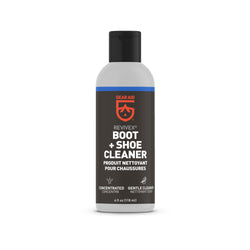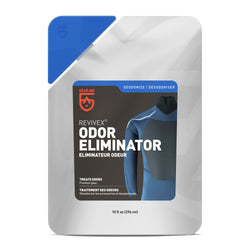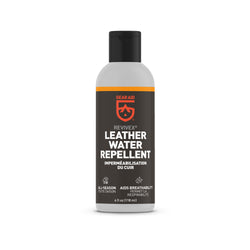Gear Care & Repair
How to Clean Boots and Shoes
To help prolong the life of hiking shoes, we recommend cleaning the shoes after each use. As dirt and particulates attach themselves to the shoe they grind away at the fabric and can quickly reduce the life of the footwear. Salt build-up can also eat away at fabric life. Mud can have a negative impact on leather shoes by drying them out. All of these factors stress the importance of removing as much of the dirt, mud and particulates as possible after each use. Before cleaning footwear, consumers should always follow the manufacturer’s care instructions.
Steps to clean footwear
1.) Check that the shoes are dry. If they are wet after use, especially if there is mud, allow the mud to dry first. Otherwise you may end up forcing or embedding the dirt deeper into the fabric making it more difficult to remove stains and impacting breathability and water repellency. Stuffing the shoes with newspaper helps absorb moisture and allows the boots to dry quicker.
2.) Once the shoes are dry, scrub dirt and particulates off the shoe with a soft brush. Once you have removed the exterior particulates, complete a “deeper” clean for any dirt, oil or particulates that may be embedded in the fabric. We offer a specialized cleaner called Revivex Boot and Shoe Cleaner that works great at removing embedded dirt, oils, grime and particulates.
3.) Once you have scrubbed the exterior of the shoe with the soft brush, rinse the shoes with water to wet the surface.
4.) Next, apply a small amount of Shoe and Boot Cleaner to your brush and gently scrub the surface. Rinse until water runs clear.
It is important that you use a specialized cleaner. Typical “household” detergents contain sudsing agents, microbes and fragrances that can diminish performance by leaving behind residues or clogging waterproof breathable pores.
Dirt, oils and particulates also inhibit water repellency and breathability. When water no longer beads off the boot, it begins soaking into the fabric often leaving water marks in suede fabrics. Also, as water absorbs into the shoe, the shoe itself becomes heavy, impacting performance. It is important that you clean the boots first. Once clean we recommend treating with a water repellent for further protection from moisture and staining. Learn how to waterproof footwear with Revivex.
Controlling Odor
For odor control we recommend treating the shoes with Revivex Odor Eliminator, which is a powerful blend of microbes used to remove odors caused by mold, mildew and bacteria.
Step 1: Scrub the foot bed with a stiff brush. Many times an invisible film of bacteria will form on foot beds causing odor. We recommend that you break up this film by first wetting the foot bed and then scrubbing it with a stiff brush. Next, fill a container with just enough water to completely submerge the boots (probably about a gallon). Next, add about 3 oz. of Odor Eliminator to the water and mix. Next, soak the boots in the Odor Eliminator bath and be sure to soak and saturate them completely.
Step 2: Once you've soaked the boots, remove them from the Odor Eliminator bath and allow them to air dry completely. Do not rinse the boots as rinsing may remove the microbes. Also, do not apply heat as heat may kill the microbes. It is best to allow the boots to air dry as long as possible. This gives the microbes plenty of time to do their job. You will not notice a reduction in odor, until the item has air dried completely.
Optional step: If you do not want to soak the boots or shoes, you can also mix a spray solution of Odor Eliminator. This solution must be used within 72 hours of mixing with water for maximum effectiveness. Mix 2 oz. of Odor Eliminator with 16 oz. of water in a spray bottle. Spray the boots. The item does not need to be saturated with the solution, but should be noticeably damp. Allow to air dry.



